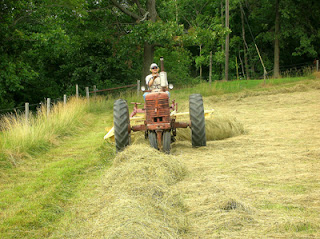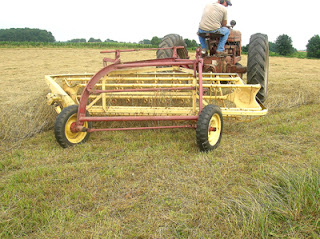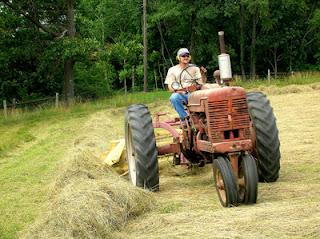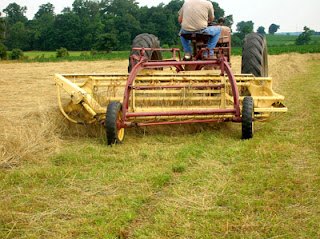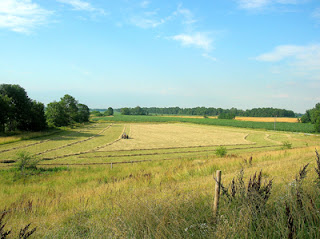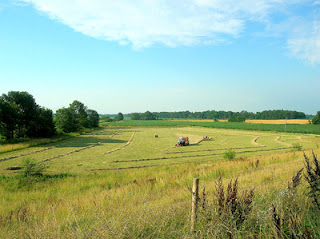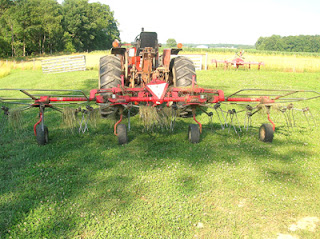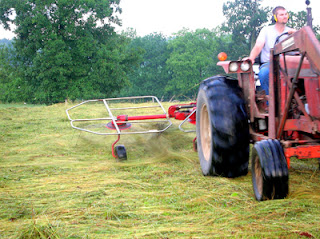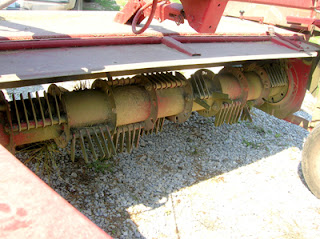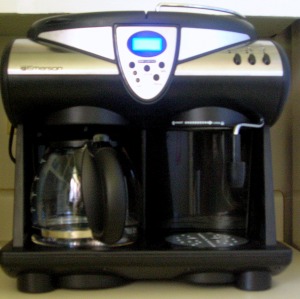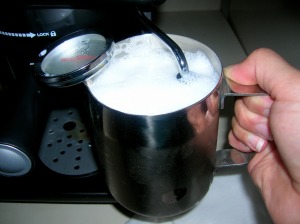After my brief hiatus, I am back with Part 2 of "Nuts and Bolts" from
Dan Miller's 48 Days to the Work You Love Career Kit.

We left off
last time after discussing resume writing and developing a creative job search strategy. This time, we'll talk about the interview and salary negotiating process.
The main points for this week are:
1. The interview is a selling process. You are in sales now - you are selling yourself!
2. Interviewing means "to see about each other." This is also a time for you to learn more about the company
3. Most hiring decisions are made very early in the interview. First impressions are essential!
4. The first salary/benefit package offered is often open for negotiation. By all means, negotiate!
First and foremost, it is important to understand that a person who does not interview well will not receive a job offer. The interview is so essential - you must present yourself with confidence (but not too much). You are there to tell the interviewer why you are the absolute best candidate for the job (without coming off as a snobby know-it-all). It's hard to convince them that you are the best candidate when you are dressed in a t-shirt and jeans, or when most sentences start with "um, well..."
First impressions are so important. Watch your clothing choices, hygiene, breath, you name it. Watch your etiquette and (obviously) your language. Watch your body language. No slouching in your chair, no crossing your arms across your chest, things like this that may make you appear to be disinterested or closed off. It's the little things that say the most.
Make sure you are prepared for the interview. It is important to know yourself well. The early parts of this process were focused on introspection - identifying the skills and abilities that you have that make you an attractive candidate for any job that you want. Use this information now! What can you do well, better than anyone else? What are your values, and how are they reflected in your activities, both inside and outside your work life? What are your dreams and passions? Can you communicate these well to a potential employer?
There are a few common interview questions, and you should have answers prepared for them. When you are asked to "Tell me a little about yourself," the interviewer does not want to hear, "What do you want to know?" in response. You should have an answer ready that includes a brief personal background, education/work history, career highlights and professional achievements, and why you are looking for new opportunities.
When you are asked to talk about your weaknesses, please don't say that you don't have any. We all do. My biggest weakness is patience. I have had a chance to work on that during my residency training, but it is still a problem for me. (Something about the slower Midwest pace of life compared to the go-go-go pace I was used to in New England.) Recognize that you have weaknesses, and tell them what you have done/are doing to improve here.
What are your strengths? You should be as familiar, if not more, with your strengths as you are with your weaknesses. If you can't communicate your strengths to a potential employer, how are they supposed to see what your strengths are?
You should also know the basic information about the company you are interviewing with. Review the company's website at a bare minimum to familiarize yourself with the basics. The more information you have, the more questions you can ask. Asking questions (at the appropriate time in the interview), and the questions you ask, often can create a stronger impression than how you answer questions earlier in the interview.
Make sure you know where you are going, and who you are meeting. Show up a few minutes early, but not too early (5-15 minutes is sufficient). Do
not be late. If you have the option, schedule your interview for Tuesday-Thursday mornings. Surveys have shown that most hiring decisions are made before 11:00 am.
Basic rules to remember? Smile. Be pleasant and outgoing. Be self-confident. Do not speak poorly of previous employers or coworkers. Show interest in the company and the interviewer. Know your resume thoroughly and be prepared to elaborate. This all sounds basic, but as I said earlier, it's the little things that count!
After the interview, send a thank-you note the next day. This creates another contact point, and helps with top-of-mind positioning. In the note, say that you will follow up by phone on a specific date and time. Do follow up when you say you will. Continue to make follow up phone calls once a week or so until a decision has been made. Don't pester, but be persistent.
Okay, now you've had the interview and been offered the job. What's next? Negotiate!
Most companies will offer a salary/benefit package that is less than what they have budgeted for the position. Keep in mind that the salary is determined by the job responsibilities, not by your education, experience, or your previous salary. The salary package should not come up in the interview process until the company has decided that it wants to hire you, and you have decided that you want the job. If the interviewer brings this up too soon, simply say something like, "Let's talk about the position a little more to see if there is a match." Once you have decided that you do want this job, you can bring it up again.
Dan has a long list of things that can fall under "compensation," including a company car, country club membership, life insurance, medical/dental/vision insurance, profit sharing, etc etc etc, all the way to a free parking spot and unlimited M&Ms. (I'm a fan of the M&M compensation.) What is reasonable for benefits depends on the company you will be working for, and on your needs/wants.
When you enter into negotiations, it is important to know what comparable salaries are for this type of position. Use this as your bargaining position, not the salary you made at your previous job. While you should have some fun with this process, there are a few important things to keep in mind. First, you must make the company money. If your salary request is more than they can expect to make from your work, they will not hire you. Second, your compensation package relates directly to your level of responsibility within the company. Third, the company is trying to negotiate, too. Their first offer is typically not their final. Fourth, get your package agreement in writing, with all the details.
Great! Got the job? Got the compensation package? Now get to it!
But, wait... What if I don't want a "traditional" job?
Come back next week for the section I have been looking forward to "Maybe I don't want a traditional job!"


